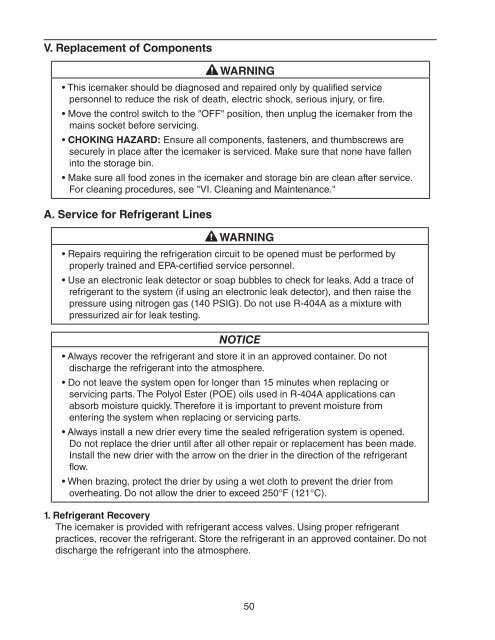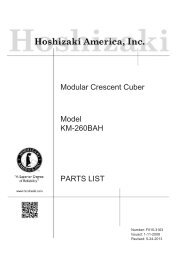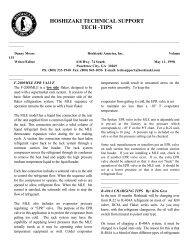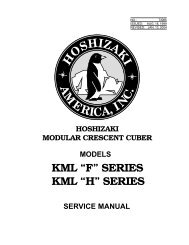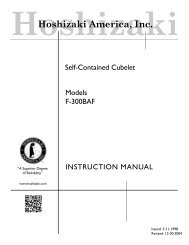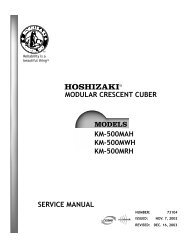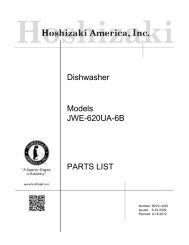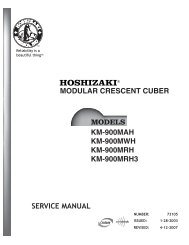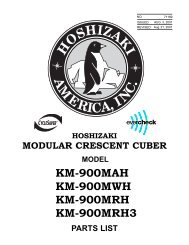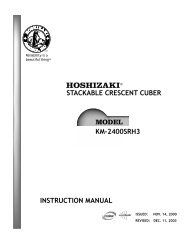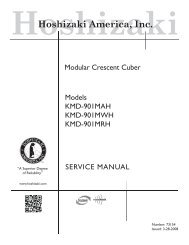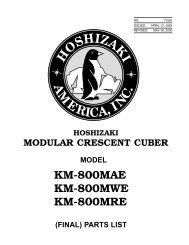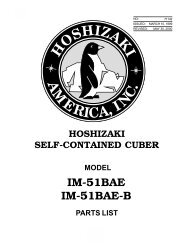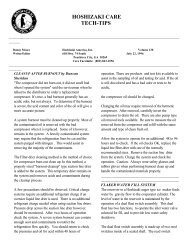KM-650MAH-E Service manual - Hoshizaki
KM-650MAH-E Service manual - Hoshizaki
KM-650MAH-E Service manual - Hoshizaki
Create successful ePaper yourself
Turn your PDF publications into a flip-book with our unique Google optimized e-Paper software.
V. Replacement of Components<br />
WARNING<br />
• This icemaker should be diagnosed and repaired only by qualified service<br />
personnel to reduce the risk of death, electric shock, serious injury, or fire.<br />
• Move the control switch to the "OFF" position, then unplug the icemaker from the<br />
mains socket before servicing.<br />
• CHOKING HAZARD: Ensure all components, fasteners, and thumbscrews are<br />
securely in place after the icemaker is serviced. Make sure that none have fallen<br />
into the storage bin.<br />
• Make sure all food zones in the icemaker and storage bin are clean after service.<br />
For cleaning procedures, see "VI. Cleaning and Maintenance."<br />
A. <strong>Service</strong> for Refrigerant Lines<br />
WARNING<br />
• Repairs requiring the refrigeration circuit to be opened must be performed by<br />
properly trained and EPA-certified service personnel.<br />
• Use an electronic leak detector or soap bubbles to check for leaks. Add a trace of<br />
refrigerant to the system (if using an electronic leak detector), and then raise the<br />
pressure using nitrogen gas (140 PSIG). Do not use R‐404A as a mixture with<br />
pressurized air for leak testing.<br />
NOTICE<br />
• Always recover the refrigerant and store it in an approved container. Do not<br />
discharge the refrigerant into the atmosphere.<br />
• Do not leave the system open for longer than 15 minutes when replacing or<br />
servicing parts. The Polyol Ester (POE) oils used in R-404A applications can<br />
absorb moisture quickly. Therefore it is important to prevent moisture from<br />
entering the system when replacing or servicing parts.<br />
• Always install a new drier every time the sealed refrigeration system is opened.<br />
Do not replace the drier until after all other repair or replacement has been made.<br />
Install the new drier with the arrow on the drier in the direction of the refrigerant<br />
flow.<br />
• When brazing, protect the drier by using a wet cloth to prevent the drier from<br />
overheating. Do not allow the drier to exceed 250°F (121°C).<br />
1. Refrigerant Recovery<br />
The icemaker is provided with refrigerant access valves. Using proper refrigerant<br />
practices, recover the refrigerant. Store the refrigerant in an approved container. Do not<br />
discharge the refrigerant into the atmosphere.<br />
50


